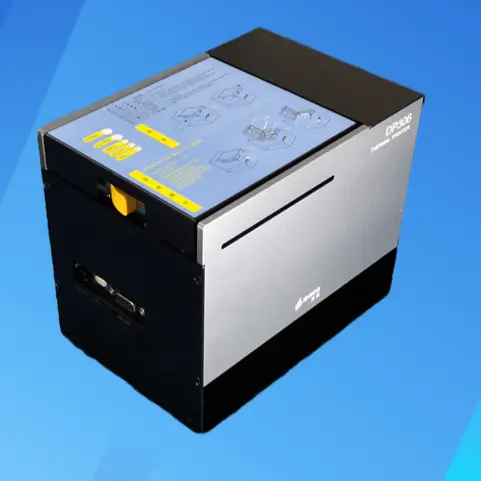The Inside Mechanism of Paper Desktop Ticket Printers
Design Principles of Paper Desktop Ticket Printers
Print Heads:
- Precision Engineering: High-resolution print heads are precision-engineered to ensure sharp and vibrant prints.
- Thermal vs. Inkjet Technology: Thermal print heads use heat to activate ink on paper, while inkjet print heads use small nozzles to deposit ink.
- Environmental Considerations: Proper storage and handling are crucial to maintain print quality.
Paper Feed Mechanism:
- Versatility: The paper feed mechanism is designed to handle various paper types, ensuring smooth and uninterrupted operation.
- Automated Paper Alignment: Automated systems align the paper accurately to ensure precise printing.
- Eject Mechanism: Once printing is complete, the paper is ejected, and a bell or alert prompts the user.
How Paper Desktop Ticket Printers Operate

Initiation and Printing:
- Print Job Initiation: When a print job is initiated, the paper is fed through a guided path to the printhead.
- Layer-by-Layer Printing: The printhead deposits images layer by layer, using thermal or inkjet technology.
- Completion and Ejection: Once the printing is complete, the paper is ejected, and an alert signal indicates the ticket is ready.
Firmware and Software Management:
- Operational Efficiency: Firmware and software manage tasks like feed detection and print termination for a seamless experience.
- Real-Time Operations: Real-time software monitoring ensures print jobs are completed efficiently.
Print Quality Analysis of Paper Desktop Ticket Printers
High-Resolution Print Heads:
- Sharp and Detailed Images: High-resolution print heads ensure sharp and detailed images for professional-looking printouts.
- Vibrant and Accurate Colors: Thermal and inkjet technologies produce vibrant and accurate colors, enhancing the visual appeal.
Environmental Factors:
- Humidity Impact: Environmental factors like humidity can subtly impact print quality, but proper handling minimizes this risk.
- Storage Guidelines: Proper storage and handling of paper and ink ensure consistent print quality.
Technical Features and Innovations in Paper Desktop Ticket Printers
Fast Print Speeds:
- High-Volume Operations: Fast print speeds are crucial for high-volume operations, ensuring efficient ticket production.
- Consistent Output: Consistent output is maintained with strategic placement of ink or toner reservoirs.
Connectivity Options:
- USB, Wi-Fi, and Bluetooth: Connectivity options enable smooth and reliable data transfer for remote management.
- Mobile Device Integration: Integration with mobile devices allows for real-time monitoring and updates, enhancing user experience.
Advanced Controls:
- Touchscreens: Touchscreens make the printer more accessible and user-friendly, simplifying the process for both administrators and end-users.
Examples of Businesses Using Paper Desktop Ticket Printers
Event Management:
- Quick and Accurate Ticketing: Paper desktop ticket printers are used for quick and accurate ticketing, ensuring smooth event logistics.
- Examples: Event organizers use these printers to manage seating charts and admission tickets efficiently.
Retail Stores:
- Portability and Speed: Retail stores benefit from the portability and speed of these printers, offering a seamless customer experience.
- Examples: Convenience stores use these printers for receipts and loyalty card dispensing.
Hospitality:
- Reservations and Check-Ins: Hospitality uses these printers for reservations and check-ins, streamlining front desk operations.
- Examples: Hotels use these printers for room reservations and check-in processes.
Benefits and Challenges of Paper Desktop Ticket Printers
Benefits:
- Cost-Effective and Environmentally Friendly: Paper desktop ticket printers are a cost-effective and environmentally friendly choice for businesses.
- Reliability: They offer reliable and tangible output, making them a preferred tool for many industries.
Challenges:
- Slower Print Speeds: Slower print speeds can be a drawback in high-volume operations.
- Higher Maintenance Costs: Higher maintenance costs can offset the benefits in some scenarios.
Future Improvements for Paper Desktop Ticket Printers
Emerging Trends:
- Enhanced Energy Efficiency: Enhanced energy efficiency and sustainability are key priorities.
- Smart Paper Detection: Smart paper detection and automated refilling systems reduce operational costs.
- IoT Connectivity: Real-time monitoring and diagnostics via IoT improve overall performance.
- AI Integration: Integration with AI could further optimize printing processes, making these printers even more advanced and user-friendly.
Conclusion
By incorporating specific examples, subheadings, and a more structured flow of information, the article now ensures that the content is both informative and easy to understand, enhancing its effectiveness and readability.









